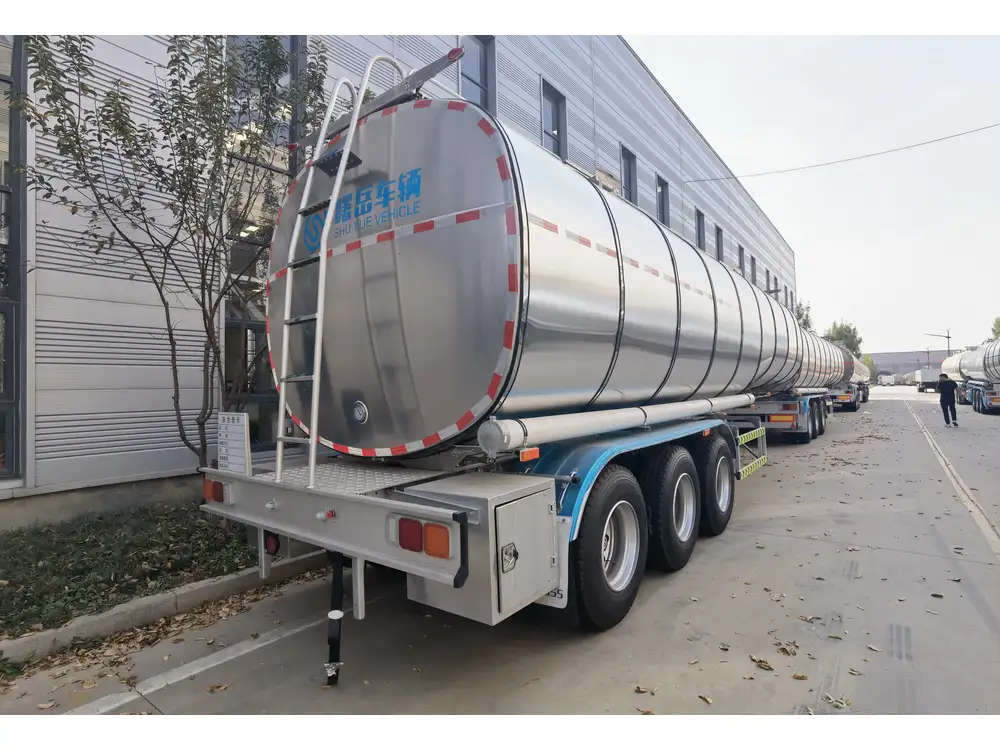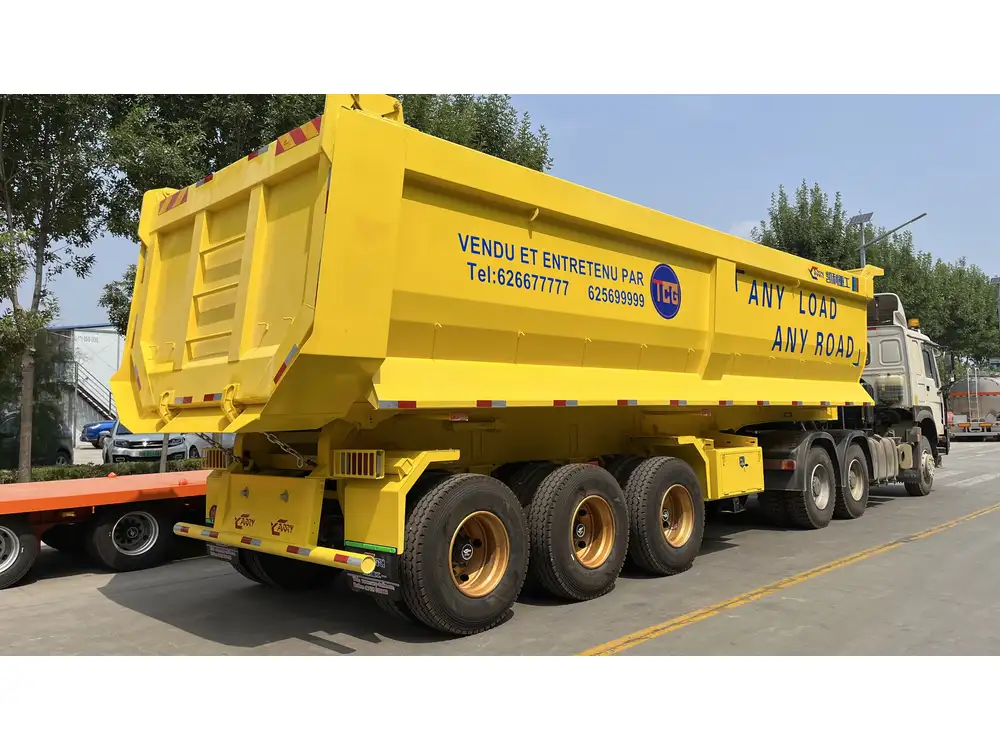When it comes to towing heavy loads, understanding vehicle specifications, trailer types, and their compatibility is paramount. Among these queries, one prevalent question arises in the realm of logistics and transportation: Can you haul a semi box trailer with a 350? In this article, we will delve into the details surrounding towing capabilities, specific vehicle metrics, compatibility with certain trailers, and practical considerations to enable informed decision-making for operators and fleet managers alike.
Understanding the Towing Capacity of a 350 Truck
Overview of a 350 Truck
The term “350” generally refers to a heavy-duty truck, such as the Ford F-350, Chevrolet Silverado 3500, or RAM 3500. These vehicles are engineered to tackle larger loads with robust engines, reinforced frames, and superior braking systems. Below, we’ll outline the key specifications for typical 350 series trucks.
| Specifications | Ford F-350 | Chevrolet Silverado 3500 | RAM 3500 |
|---|---|---|---|
| Max Towing Capacity | 37,000 lbs | 36,000 lbs | 37,100 lbs |
| Max Payload Capacity | 7,850 lbs | 7,442 lbs | 7,680 lbs |
| Engine Types | 6.2L V8, 7.3L V8, 6.7L Power Stroke Diesel | 6.6L V8, 6.6L Duramax Diesel | 6.4L V8, 6.7L Cummins Turbo Diesel |
| Axle Ratio Range | 3.31 – 4.30 | 3.42 – 4.10 | 3.73 – 3.92 |
| Drivetrain Options | RWD/AWD | RWD/AWD | RWD/AWD |

Towing a Semi Box Trailer
A semi box trailer, commonly used in freight transport, is typically weighted anywhere from 10,000 to 30,000 pounds depending on its capacity and dimensions. The combined weight of the box trailer and cargo can reach advanced levels, sometimes exceeding the limits of standard pick-up trucks. Below, we analyze the towing capabilities in relation to the requirements of hauling a semi box trailer.
Can A 350 Haul a Semi Box Trailer?
For a 350 truck, the answer is definitively yes – provided that the semi box trailer and the payload do not exceed the truck’s maximum towing capacity. It is essential to accurately assess the weight of the semi box trailer plus the cargo to ensure compatibility.
- Checking the Trailer Weight: Knowing the weight of your specific trailer (length, height, and structural material contribute to weight) along with the estimated weight of the load is critical.
- Gross Vehicle Weight Rating (GVWR): This figure indicates the maximum weight the truck can safely handle, factoring in the vehicle’s weight plus the trailer’s.
- Tongue Weight Consideration: The weight exerted downwards at the hitch point (usually around 10-15% of the trailer’s total weight) must also be taken into account to avoid safety hazards.
Real-World Examples and Scenarios
To better comprehend the implications of hauling semi box trailers with a 350, let’s consider a few scenarios that illustrate weight handling.

Scenario 1: Standard Equipment Usage
For a standard semi box trailer weighing 15,000 lbs:
- Total Weight with Cargo: 22,000 lbs.
- 350 Truck Payload Capacity: 37,000 lbs.
Outcome: In this scenario, the 350 truck has ample capacity to tow the semi box trailer safely without risking overloading.
Scenario 2: Maximizing Efficiency
For an enhanced scenario, with a larger box trailer loading up to 30,000 lbs:
- Total Weight with Cargo: 40,000 lbs.
- 350 Truck Payload Capacity: 37,000 lbs.
Outcome: The truck in this scenario would be overloaded, requiring a review of the load or selection of a higher-rated towing vehicle. Overloading can potentially lead to hazards such as brake failure, loss of steering control, and increased wear on truck components.
Key Considerations for Efficiency and Safety
Understanding that a 350 truck can haul a semi box trailer opens a multitude of operational possibilities. However, ensuring safe and efficient transport involves greater attention to the following aspects:

Proper Hitching and Loading Techniques
| Loading Tips | Description |
|---|---|
| Weight Distribution | Ensure the weight is evenly distributed to enhance stability. |
| Proper Hitch Assembly | Use compatible heavy-duty hitches that can handle the weight without risk. |
| Utilize Safety Chains | Always secure the trailer with appropriate safety chains to prevent accidents. |
Maintenance and Inspection
Regular maintenance of both the truck and the trailer is integral to safety and longevity. Responsibilities include:
- Brake Inspection: Ensuring brake components are in optimal condition for trailer control.
- Tire Checks: Examining tread and pressures on both the truck and trailer to avoid blowouts.
- Light Functionality: Checking that brake lights, indicators, and proper lighting are operational to ensure safe driving in any condition.
Regulatory Compliance
Weight Limits: Adhere to local and federal regulations regarding weight limits on roads to avoid fines and ensure safety.
| Regulatory Aspect | Description |
|---|---|
| State and Federal Guidelines | Understanding the limits specific to your route. |
| Commercial Licensing | Confirm if special licenses are needed for carrying specific loads. |

Conclusion: Ensuring Successful Transport Operations
In summary, the ability to haul a semi box trailer using a 350 arose from a deep understanding of weight limits, vehicle capacities, and operational safety. Fleet managers and logistics companies must conduct meticulous assessments of their vehicle capabilities against the trailer specifications to ensure efficient transport operations.
Helpful Actions for Fleet Managers
- Conduct Regular Training Sessions: Equip drivers with knowledge about towing capabilities and regulations.
- Implement Weight Monitoring Systems: Consider investing in onboard scale systems to assess weight in real-time.
- Develop Emergency Protocols: Train staff to manage potential overload scenarios effectively.
Hauling a semi box trailer with a 350 is entirely plausible, provided you remain vigilant about the factors mentioned above. By adhering to guidelines, understanding vehicle specifications, and prioritizing safety practices, you can optimize your operations and enhance overall transportation efficacy.
In striving to answer the query “Can you haul a semi box trailer with a 350?,” the answer resonates with underlying knowledge about constraints and capabilities. As the world of logistics continues to evolve, relying on robust information is essential for every operator in the field.
This comprehensive guide serves to not only demystify the towing capabilities of a 350 truck but also to enlighten operators on the significant aspects of safe transportation practices, extending beyond basic logistics understanding to encompass broader operational efficiency.



